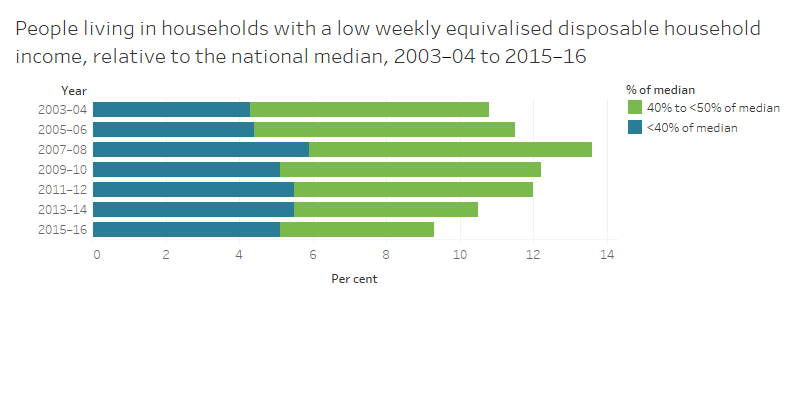Proportion of people with low income
Definition: There are numerous ways to measure low income. The method chosen for this indicator is to consider people living in households with an equivalised disposable household income (that is, after-tax income, adjusted for the number of people in the household) that is less than 50% of the national median. These data are presented as a proportion of all people.

Source: Unpublished data from the ABS 2003–04, 2005–06, 2007–08, 2009–10, 2011–12, 2013–14 and 2015–16 Surveys of Income and Housing; Table S1.4.21.
- In 2015–16, the median equivalised disposable household income was $853 per week (ABS 2017).
- In 2015–16, 2.2 million people lived on less than half the median equivalised household income (that is, less than $427 per week), including 1.2 million people living on less than 40% of the median ($341).
- The proportion of people living in low-income households was 9.3% in 2015–16. This was the lowest proportion of people living in low-income households over period from 2003–04 to 2015–16. Over this period, the proportion increased from 11% in 2003–04 to a peak of 14% in 2007–08, and decreased since then.
For more information, see Chapter 4.2 'Social determinants of health'.


